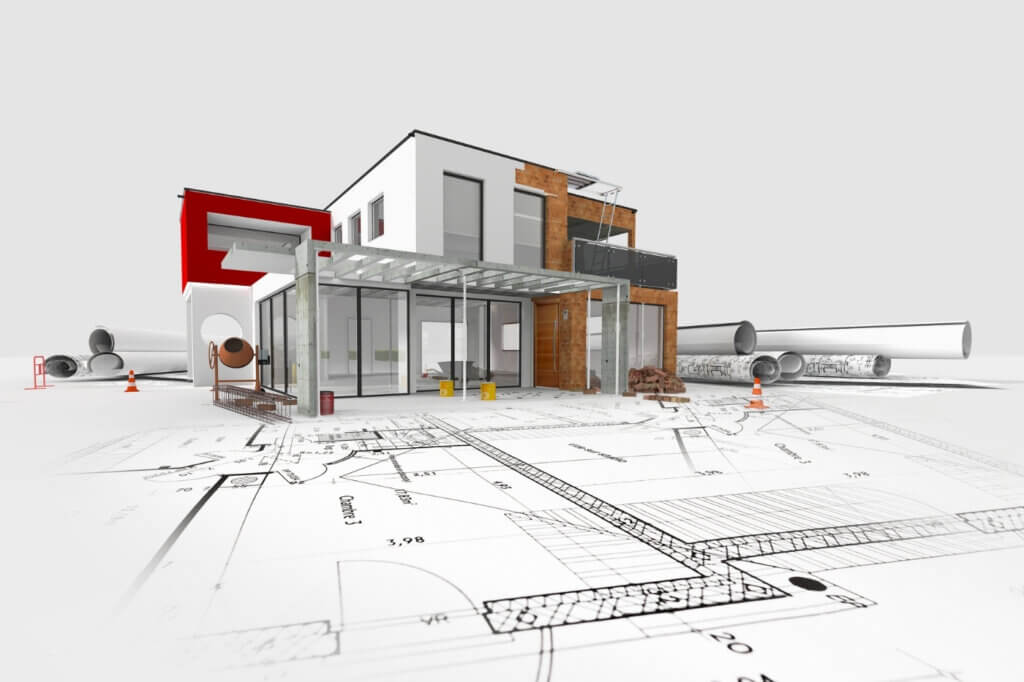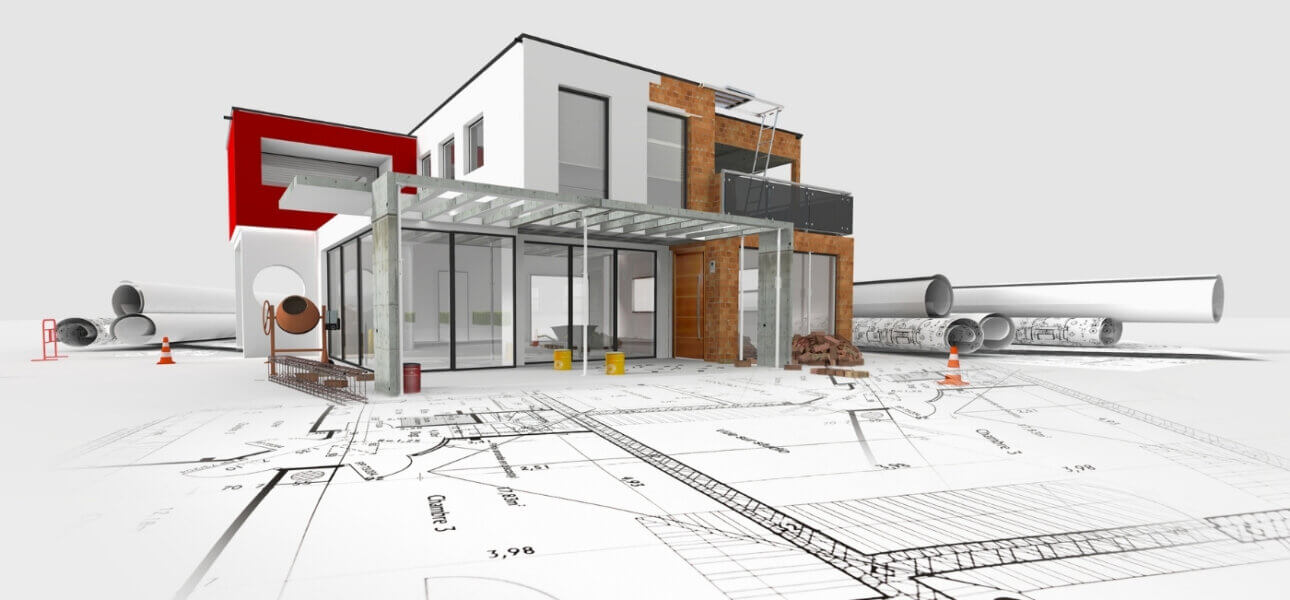Chennai summers are long, bright, and humid. If you are planning house construction in Chennai, smart ventilation and heat control decisions at design stage can keep interiors cooler by 3 to 6 degrees and cut electricity bills meaningfully. Here’s a simple, builder friendly guide you can use before finalising plans in Padappai, Oragadam or anywhere across the city.

Why Chennai Homes Overheat
High solar gain, sea breeze patterns, and long east west sun paths make typical concrete boxes trap heat. Add low wind corridors between houses and dark surfaces, and you get hot rooms and higher AC loads. Good news is, a few layout and material tweaks fix most of this.
Orient Right: First 20 Percent That Solves 80 Percent
- Keep longer facades facing north and south to reduce direct glare and heat.
- Place fewer and smaller openings on west, slightly larger on east, and the largest on north.
- For corner plots in Padappai belts, try a light L shaped plan to create a breezy internal court.
Cross Ventilation: Two Openings, One Breeze
- Every lived room should have two openings on opposite or adjacent walls to create pressure difference.
- Use window pairs at different heights. Lower inlet plus higher outlet helps hot air escape.
- Minimum free area for openings can be 15 percent of floor area in living zones and 10 percent in bedrooms.
- If plots are narrow, use high level clerestory windows or ventilators facing the internal court.
Stack Effect: Let Hot Air Rise and Leave
- Provide a ventilated skylight or roof monitor above staircases.
- Add a 150 to 300 mm continuous ridge vent for sloped roofs.
- In flat roofs, a small solar chimney on the west side pulls warm air upwards through the day.
Shading That Actually Works
- Roof: Install a pergola or lightweight deck that shades the slab. A 300 to 450 mm air gap below the shade cuts heat gain.
- Windows: Deep chajjas sized roughly at 45 percent of window height for south and 70 percent for west. Vertical fins help for low angle evening sun.
- Outdoor: Grow climbers on pergolas along west walls. A green buffer lowers reflected heat.
Cool Roofs and Smart Slabs
- Use white or light tiles, high SRI coatings, or weathering course with broken china mosaic. Recoat every 3 to 4 years.
- Consider insulated roofing panels for utility rooms and top floor bedrooms.
- Provide a 50 to 75 mm air cavity with vent slots beneath metal sheets if you are building villa outbuildings.
Wall Strategies for Affordable Comfort
- Go for fly ash or AAC blocks to reduce heat storage. They are lighter and quicker to build.
- Add an external reflective paint system. Even two coats make a big difference.
- For west walls, use a ventilated double skin with a 25 to 40 mm cavity and bottom top vents.
Window Science: Glass, Frames, and Screens
- Use low e or solar control glass for large openings. For small windows, a high performance film is enough.
- Opt for casement windows where possible. They catch breeze better than sliders.
- Fit insect screens so you can keep windows open in the evening without worry.
- Light coloured curtains with thermal lining reduce glare and heat while keeping rooms bright.
Courtyards and Verandahs: Chennai’s Passive AC
- A 2 to 3 metre deep verandah on the south west edge shades walls and becomes a cool sit out.
- Small internal courtyards with plants and a water jar add humidity balance and a steady updraft.
- In Velammal Garden sized plots, an east facing sit out catches morning breeze and keeps living rooms fresh.
Landscape for Lower Temperatures
- Plant shade trees on west and south west boundaries. Native neem, badam, and punnai thrive in Padappai soil.
- Keep paved areas minimal. Use permeable blocks or gravel to avoid heat islands.
- A simple lawn or groundcover near west facade can reduce reflected heat indoors.
Mechanical Support Without Heavy Bills
- Ceiling fans with wider blades and BLDC motors give strong airflow at low power.
- Exhaust fans in kitchens and toilets should run longer in the evenings to purge heat.
- Consider a whole house ventilator in stair voids to flush warm air after sunset.
- Use inverter ACs as backup, not as default. With the above, you will need them fewer hours.
Water and Roof Practices for Monsoon and Summer
- Harvest rain with recharge pits to keep soil cooler and fresh.
- Use light coloured waterproofing layers. Dark membranes absorb more heat.
- If feasible, add a rooftop garden or planter strips along parapets with proper root barrier.
Room by Room Checklist for House Construction in Chennai
- Living dining: Largest north openings, verandah depth 1.8 to 2.4 metres, ceiling fan centre plus corner fan points.
- Bedrooms: Cross ventilation compulsory, west windows kept small with deep fins, reflective roller blinds.
- Kitchen: High level exhaust, shaded east or north window, heat resistant backsplash, door to utility with screen.
- Staircase: Ventilated skylight or roof monitor, louvre vents on top landing, light shaft with glass blocks on east.
- Bathrooms: High level window plus exhaust, light coloured tiles to reflect light and reduce heater time.
Budget Levels: Good, Better, Best
- Good: White roof coat, deep chajjas, cross ventilation, BLDC fans, reflective exterior paint.
- Better: Low e glass for large windows, ventilated ridge or solar chimney, AAC blocks on west, verandah shading.
- Best: Ventilated double skin west wall, insulated roof deck, whole house ventilator, rooftop garden zone.
What It Means for Plot Buyers in Padappai and Oragadam
Homes planned with passive cooling sell faster, rent better to company executives, and stay comfortable during power cuts. If you are exploring villa plots at velammalgarden.com, ask for north south oriented plots or corner plots that allow a courtyard and verandah. When you book a site visit via velammalgarden.com, carry this checklist and review sun path, breeze, and shading on ground.
Typical Mistakes to Avoid
- Oversized west windows because of view temptation.
- Dark stone cladding on sun exposed walls.
- Thin chajjas that look modern but do not shade properly.
- Sealing stair skylights without vents. It traps heat.
- Using reflective films on all windows including north, reducing daylight quality.
Simple Retrofit Ideas for Existing Homes
- Add reflective roof coat and a pergola strip on the west edge.
- Fix exterior shade screens or vertical fins to west windows.
- Install a through wall ventilator at stair landing height.
- Replace old fans with BLDC models and re angle them for coverage.
- Swap dark curtains for light, thermal lined fabrics.
Compliance and Practicality
- All suggestions align with common building practices in Tamil Nadu and are easy for local contractors to execute.
- For DTCP and RERA approved layouts like ours, setbacks and facade controls still allow verandahs, fins, and shading features when designed smartly.
- Keep your architect and site engineer involved early so orientation, window sizes, and roof details go on drawing instead of becoming site time decisions.
Next Steps
- Shortlist a north south friendly plot.
- Sketch window positions for cross ventilation before placing furniture.
- Decide roof system and shading details with your architect.
- Finalise budget level. Good, Better, or Best.
- Schedule a site visit and verify breeze corridors in the evening.
FAQs: Ventilation & Heat Control for Chennai Climate
What is the best orientation for ventilation & heat control for Chennai climate
Aim for longer facades facing north and south, keep west exposure minimal, and place major openings on the north. This reduces heat gain and improves comfort in house construction in Chennai.
How do I get cross ventilation in a compact city plot
Provide two openings in each lived room on opposite walls or at different heights. Use clerestory windows or an internal court if side setbacks are tight in Padappai layouts.
Which roof finish keeps homes coolest in Chennai
Cool roof coatings, china mosaic weathering course, or light tiles with high SRI perform well. Combine with a ventilated pergola or insulated deck for top floor rooms.
Are low e windows necessary for every room
Use low e or solar control glass on large east and west openings. On north, clear glass with shading is usually enough, which keeps rooms bright and costs lower.
What landscape choices help heat control near Oragadam
Plant native shade trees on west and south west, reduce hard paving, and add climbers on pergolas. These create cooler microclimates around walls and windows.
If you need a plot that naturally supports these ideas, explore the layouts, orientation options, and on ground breeze at velammalgarden.com. For assisted planning sessions and a practical checklist walkthrough during your site visit, book your slot through velammalgarden.com and we will guide you step by step.


